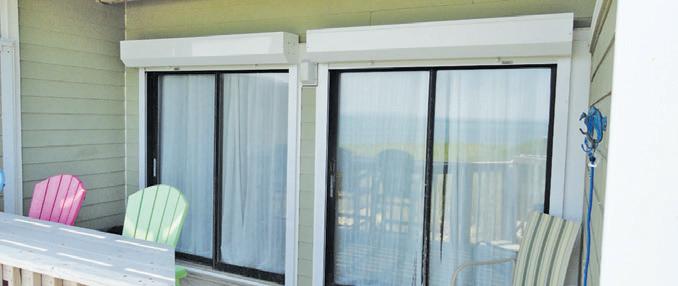Winterizing your hot tub and pool
By Danielle Puleo danielle.puleo@ thecoastlandtimes.com
As autumn settles in and the days grow cooler, homeowners across the region are preparing their properties for winter. While raking leaves, sealing windows, and servicing heating systems often top the seasonal checklist, one important task should not be overlooked: winterizing your hot tub and/or swimming pool.
Properly shutting down these backyard amenities is crucial in protecting costly equipment from the damage that freezing temperatures can cause. Whether you own a pool which provided hours of summer fun or a hot tub that you hope to enjoy during the colder months, taking the right steps now can save you time, money, and frustration come spring.
Water left in pipes, pumps, and filters can freeze and expand, causing cracks and leaks that are often expensive to repair. Even small amounts of moisture can wreak havoc once temperatures dip below freezing. Covering and securing your pool or spa also prevents debris from settling in during the off-season, reducing cleanup time when warmer weather returns.

Bradley Musika, owner of High Seas Pools & Spas, emphasized the importance of being thorough when preparing for winter. “The best thing people can do for themselves to winterize their pool and/ or spa is to drain all of the water out of all the valves and piping in the system,” he said. “The problem we see is that sometimes the weather gets cold enough to freeze stuff up, and everyone’s pipes burst. It’s always better to be prepared for that.”
Most pool professionals recommend closing your pool when the average daily temperature consistently falls below 65 degrees. Musika noted that the majority of pool companies wrap up contracts around mid-to-late October, saying, “The best time to winterize is between now and November. That’s when we’re
closing up pools that aren’t heated.”
Typical steps include balancing the water chemistry, lowering the water level, draining equipment, and adding winterizing chemicals to prevent algae growth. A durable pool cover is then installed to keep out leaves, dirt, and wildlife. For in-ground pools, attention to detail is critical—lines should be properly blown out and sealed, and pumps and filters should be drained completely.
Unlike pools, many homeowners choose to use their hot tubs yearround. If that’s your plan, be sure to keep it running consistently, check the water chemistry frequently, and maintain a snug, insulated cover to hold in heat. If you plan to shut down your hot tub for the season, draining

it thoroughly is essential. Remove all water from the plumbing lines, pumps, and jets, and dry the shell completely to avoid cracking.
While handy homeowners may be tempted to take on winterization themselves, Musika offered one piece of advice above all: “Have a professional do it for you. Best advice is if you have a vendor, make sure they’re trusted and know what
they’re doing.” A qualified technician can ensure water is removed from pumps, hoses, and lines, plugs are properly pulled, and that nothing is overlooked. For many homeowners, the peace of mind is worth it.
Think of winterization as insurance for your outdoor retreat. By preparing your pool or hot tub before the first hard freeze, you extend the life of your equipment, preserve your
water features, and avoid headaches when warmer days return. As Musika put it, “Now really is that time where you should be contacting a trusted local vendor if you don’t have one.”
This fall, as you check off your seasonal home improvement list, give your backyard oasis the care it deserves—so it’s ready to welcome you back when the sun shines again.


Fall Home Improvement
Signs it’s time to replace gutters
Home improvement projects run the gamut from complex undertakings like room additions to simpler renovations like a new front door. Some home renovations excite homeowners more than others, but all improvements are a way to make a home safer, more comfortable and/or more functional.
A gutter replacement might not inspire the same level of excitement as a room addition or an overhaul of an outdoor living space, but new gutters can help to prevent
roof damage and make properties safer by ensuring rain water is directed away from walkways. Homeowners who suspect it might be time for a gutter replacement can look for these signs of fading gutters.
• Cracks or splits: Cracks or splits at the seams of the gutters where two pieces connect is a telltale sign they need to be replaced. Cracks or splits are can slowly lead to separation of gutter pieces, which will lead to leaks. But not all cracks or splits are found at
the seams. In fact, some homes feature seamless gutters, which also can crack or split. Regardless of where they’re found, cracks or splits are a warning signs of fading gutters.
• Rust: Rust is rarely a good sign whether you’re looking at a vehicle or even garden tools. Rust also is a bad sign in relation to gutters. Gutters are painted, and not only for aesthetic purposes. Paint on gutter also serves to protect them from water. When paint begins to flake, gutters
will begin to rust and may even produce noticeable rust flakes on the ground below. Rust on gutters and rust flakes beneath them are indicative of gutters that need to be replaced.
• Gutters pulling away from the home: Gutters that appear to be pulling away from the home is a sign that they need to be replaced. Gutters are fastened to a home during installation, which ensures they can withstand rain and water. Over time, those fasteners can wear down, ultimately leading
to gutters that appear to be pulling away from the home. Though gutters can be refastened, eventually they will need to be replaced.
• Pooling water: Pooling water in a gutter may just be a sign that gutters need to be cleaned. However, pooling water on the ground directly beneath gutters indicates they’re not effectively directing water away from the home.
• Water damage inside: A home’s interior might not be the first place homeowners look
when inspecting for damaged gutters, but a flooded basement or crawl space could indicate a gutter problem. Gutters and downspouts are designed to direct water away from a home when functioning properly. When that isn’t happening, water can pool beneath the foundation, leading to pooling water and other water damage in basements and crawl spaces. New gutters can make a home safer and prolong the life of a roof and other features on a property.


The basics of window replacement projects
Windows in a home are easily taken for granted. Even though residents look through their windows every day, it’s only when issues arise that people tend to give the windows much thought.

Even if windows may not be foremost on the minds of homeowners, they are a notable component of every home. New windows also can be an expensive addition to a home, so it benefits all homeowners to gain an understanding of window replacement projects before they start shopping around for new windows.
• Windows are more complex than new homeowners may realize. Homeowners will need to choose between three commonly available window materials when picking new windows for their homes. Vinyl windows typically are the most affordable option, and opinions vary considerably regarding these products. Some tout their resistance to moisture, but others feel they lack the aesthetic appeal of costlier alternatives like fiberglass. Vinyl windows also can’t be painted, which some homeowners may find problematic. Fiberglass windows can be painted and are known for their strength and


durability. Aluminum windows are strong and durable as well, but they may not provide as much thermal protection as some other options. Each window type has its own unique pros and cons, and homeowners are urged to do their homework to determine the best fit for them.
• Consider variables unique to your home. Climate is an important consideration when choosing windows, and that of course is unique to each homeowner. How hot or cold the local climate can be will affect how well windows insulate a home, so a window that’s best for one particular region may not be ideal for another. Homeowners are urged to investigate which window materials are best suited to their local climates. All windows protect against the elements, but some might provide more adequate insulation, which can help keep utility bills low and everyone inside a home more comfortable.
• Homeowners may need to decide between replacement windows or new construction windows. The window experts at Pella note that new construction windows are the primary option for newly constructed homes or room additions.
Replacement windows are typically installed when homeowners need new windows but do not want or need to remove existing exterior cladding or trim. Replacement windows tend to be considerably less expensive than new construction windows, but the latter option merits consideration before making a final decision.
• It can be budget-friendly to replace more than one window at a time. Some, though not all, window installation companies charge a non-negotiable project fee, so it can be more financially savvy to replace more than one window at a time. Replacing windows piecemeal may require homeowners to pay the project fee for each installation, whereas homeowners who replace multiple windows at the same time will only incur that fee once. If homeowners know many windows in their home are in need of replacement, it can be financially advantageous to replace all that need it at once rather than breaking the project up and paying multiple project fees. Window replacement projects require careful consideration so homeowners identify the best products for their home.

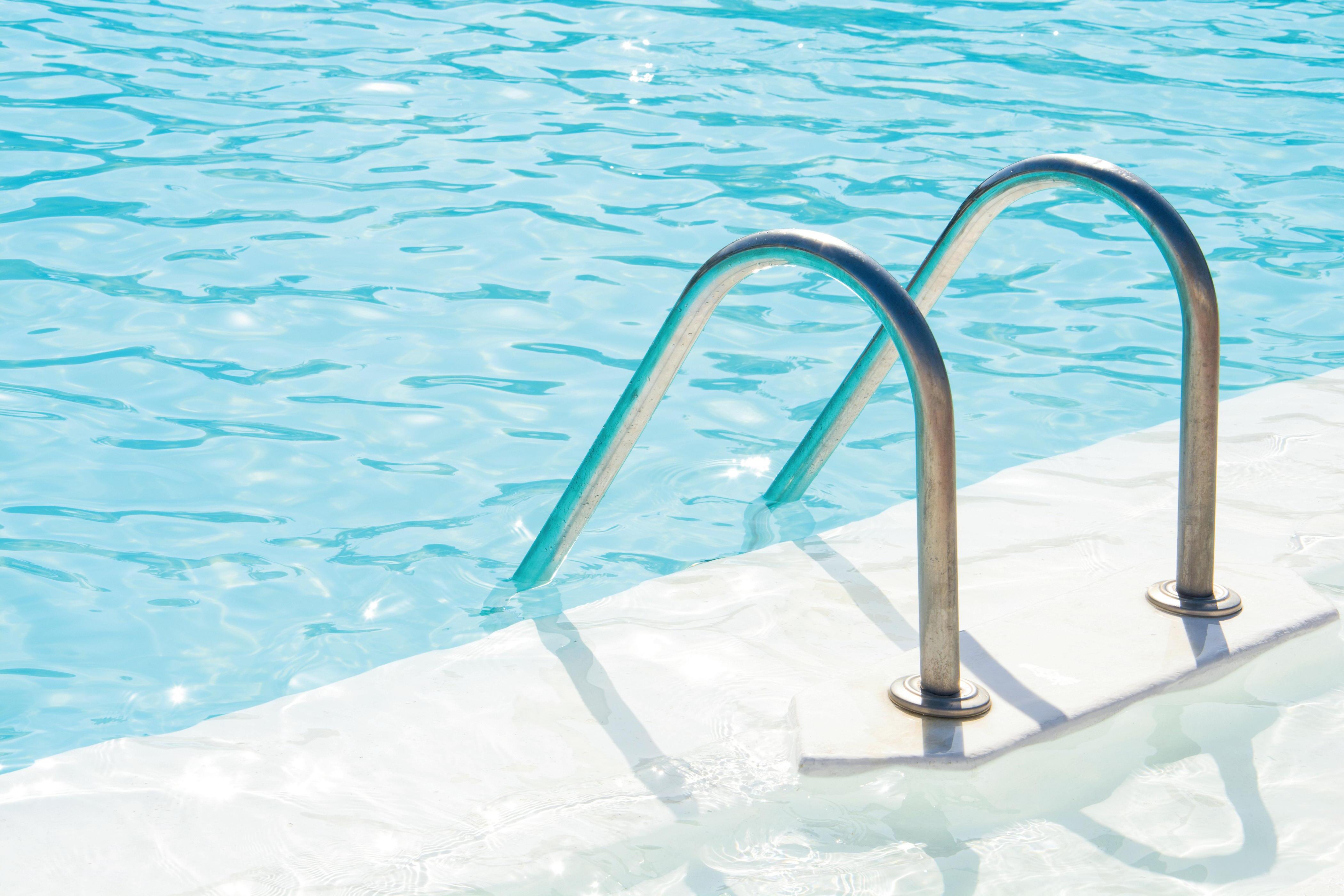




Fall Home Improvement
Garage door installation, maintenance, safety
By Danielle Puleo danielle.puleo@ thecoastlandtimes.com
When homeowners think of fall home improvement projects, garage doors might not be the first thing that comes to mind. But along the Outer Banks, where coastal weather brings high winds, salt air, and seasonal storms, your garage door plays a major role in keeping your home secure, efficient, and protected.
A properly functioning garage door not only enhances curb appeal but also safeguards vehicles, tools, and storage items from the elements. With winter weather approaching, now is the perfect time to consider upgrading, scheduling maintenance, or checking that your garage door system is operating safely.
Autumn provides ideal conditions for garage door work. The cooler, drier weather means fewer installation delays and less stress on components than in the heat of summer. For coastal homeowners, completing garage door projects before winter also ensures better insulation and storm readiness. Many doors in our region take a beating from salt air, humidity, and shifting winds—making preventative care in the fall especially important. Garage doors are often overlooked until something goes wrong. But on the Outer Banks, regular upkeep is essential to combat the corrosive effects of salt and sand. Experts recommend:
• Lubricating moving parts such as rollers, springs, and hinges to prevent rust and keep them running smoothly.
• Checking balance and alignment to reduce strain on the opener, which can be tested by salty, damp conditions.
• Inspecting weather stripping and seals to block drafts, sand, and moisture that sneak in with coastal winds.
• Tightening hardware like bolts and brackets that may loosen faster in homes exposed to shifting conditions.
Just a few minutes of maintenance each season can protect against costly repairs and help your garage stand up to the coastal climate. As always, using a trusted professional is key to ensuring your garage door operates correctly and is maintained the right way. Island Tech Professionals is a great option if you are looking for a trusted local professional, and has over 15 years of experience in electronic technology design and troubleshooting.
Garage doors are the largest moving object in most homes and can be dangerous if not properly maintained. Along the coast, where high winds can turn loose items into hazards, a secure and properly functioning door is even more important. Test the auto-reverse feature, ensure sensors are working, and make sure your door can withstand sudden gusts.
If your garage door is more than 15 years old, it may not meet today’s wind load and safety
standards. Upgrading to a modern, reinforced model can provide peace of mind during storm season, while also improving energy efficiency and noise reduction.
Some tasks, like lubricating or tightening parts, can be handled by homeowners. But repairs involving springs, cables, or opener mechanisms should be left to professionals, especially in coastal regions where rust and wear may complicate the job. With fall being a busy season for contractors, booking service early ensures you won’t be caught off guard if your garage door suddenly fails during a cold snap or storm.
Your garage door is more than a convenience; it’s a barrier against the unique challenges of coastal living. Fall is the season to give it extra attention. By tackling installation, maintenance, or safety upgrades now, Outer Banks homeowners can head into winter with confidence that their garage doors will stand strong against salt, wind, and weather.



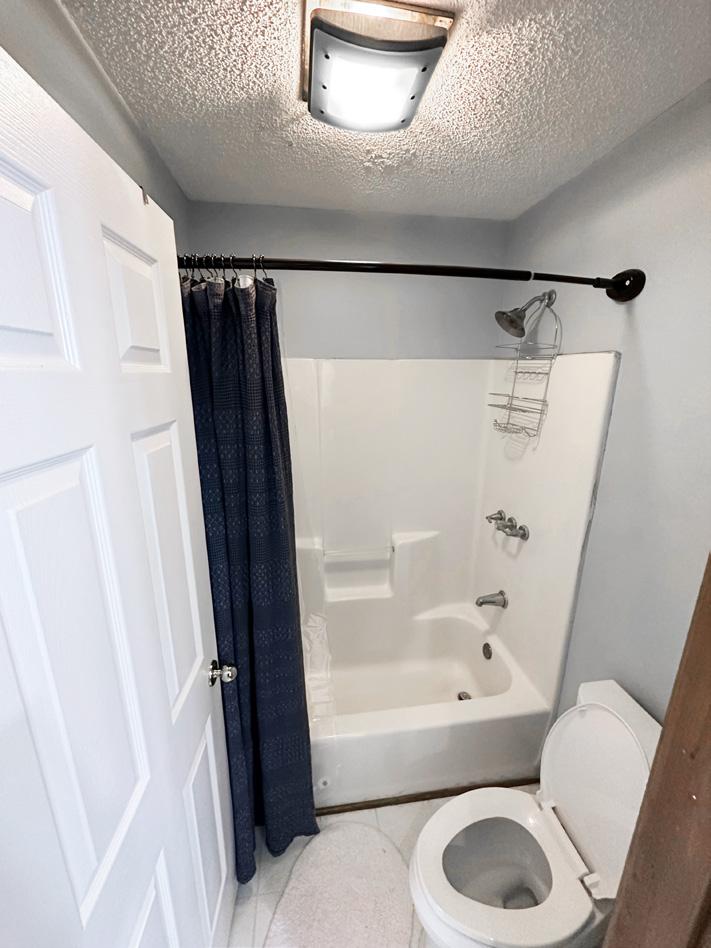









Fall Home Improvement
Why it pays to create a mudroom in a home
Considerations for room additions or space modifications generally involve rooms that will add value or function to a home. Mudrooms certainly fit that description, as they can add aesthetic appeal in more ways than one. As the name implies, mudrooms are entire rooms or areas near entryways of homes where muddy shoes and other items can be stored. By having a set space for messy shoes and coats, homeowners do not need to worry about dirt and other debris being tracked throughout the home. Mudrooms also can provide a welcoming space for guests.
Homeowners who have
adequate space to add an entirely new room may have no difficulty putting in a mudroom. A mudroom addition is a job best left to a professional. Ideally, this new mudroom can be adjacent to an entry by the garage, or a side or back door. The footprint of the mudroom needn’t be too large, either. All it requires is a small amount of space to place a bench, coat hooks and shoe storage. According to This Old House, homeowners also can convert a porch, create a mudroom by expanding into an adjacent room or closet, or even repurpose space in an attached garage. U.S. News and World Report
indicates that a well planned and executed mudroom has the potential to increase a home’s value. Depending on the scope of the work, the average cost of a mudroom project ranges from $2,500 for a simple porch conversion to $30,000 when a new foundation is needed and the buildout is extensive. Budget-conscious homeowners can create a mudroom in an existing foyer or another entryway. Adequate storage is essential for any mudroom, and should include coat racks, hooks, a bench to facilitate removing shoes safely, shoe storage, and additional considerations,
like shopping bag storage or umbrella holders. Creating a door from the outside into an existing laundry room can enable homeowners to use the space as both a mudroom and laundry area with minimal changes necessary. There are some extra considerations for mudrooms that homeowners should think about. The flooring, walls and
furniture/storage used in the mudroom should be durable and easily cleaned. As wet and dirty shoes and clothing will be in the space, it’s essential to make clean-up a breeze. Look for nonslip flooring so entering the mudroom safely is not an issue. Although a mudroom is a utilitarian space, creature comforts can be added to integrate the
space with the rest of the home. Cover a storage bench with indoor-outdoor fabric that coordinates to the colors used in a home. Add some decorative drawer pulls and cabinet hardware to elevate the space. Washable throw rugs also can add some design appeal to the room.
Mudrooms can be useful spaces that add function and value to homes.
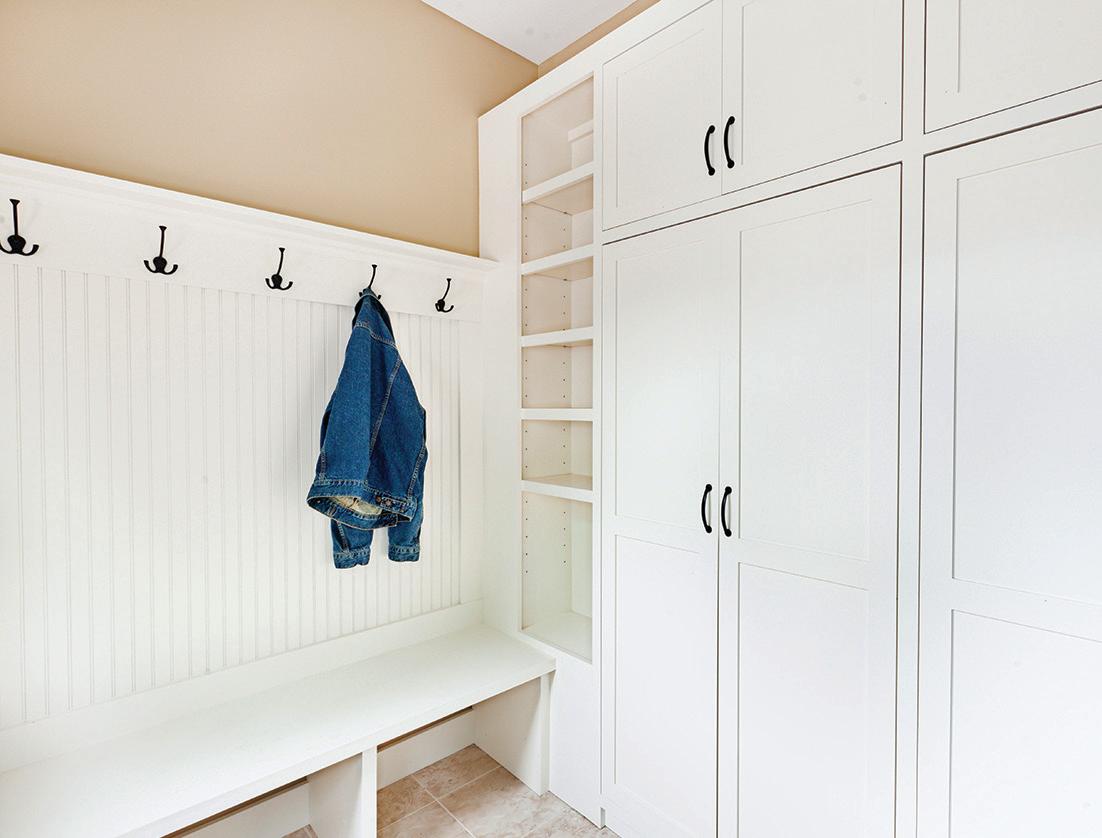
Cooking up a kitchen remodel



A successful kitchen renovation project requires careful planning and a detailed vision of what the space will look like upon completion. Whether a homeowner is thinking about giving the kitchen a major overhaul or just a minor refresh, bringing that vision to life doesn’t happen overnight. There is a process that must go into a kitchen renovation. Embarking on a kitchen remodel can be an exciting venture and homeowners may be eager to dive right in, but familiarizing oneself with what to expect prior to the start can help property owners navigate the process more smoothly.
• Inspiration and design: The first phase involves dreaming up kitchen plans and making practical decisions regarding efficiency and functionality. Considerable time may be spent working with a designer and architect, which will involve choosing materials and a color scheme.
• Creating a budget: According to Angi, the average kitchen remodel costs $26,934, but price ultimately varies depending on the scope of the work. Costs may be less
or more depending on the size of the kitchen and the materials chosen.
• Demolition: Before a homeowner can have a new kitchen, the old one must be removed. The real physical transformation begins with the demolition, which tends to be quick but messy. It is essential to set up an alternative “mini kitchen” elsewhere, or expect to be dining out throughout the remodel. The demo process may reveal any issues that will need to be remedied before the real work can begin, such as structural damage, leaks, mold or other hiccups.
• Contractor work begins: It can take one to three weeks for contractors to install plumbing, mechanical components, electrical wiring, ductwork, and more, followed by structural needs and drywall, according to sink and faucet manufacturer Blanco. Flooring and cabinets will follow, and can take another week or more. Fabricating custom countertops is a lengthy process and can represent the bulk of a kitchen renovation timeline. Expect a few weeks for countertops to be measured, made and then installed. • Appliances and finishing touches: Appliances will be delivered and hooked up at the tail end of the renovation. Finally, the backsplash, fixtures and lighting are put into place. The last leg of the remodel will include painting, trim work and installation of hardware on cabinets and drawers. Once all the work is done, it is essential for homeowners to make sure everything is to their liking. According to HGTV and Kitchy Crouse of CK Interior Design, a regular kitchen renovation can take anywhere from six to 12 weeks. With so much time devoted to the space, homeowners should ensure it lives up to their expectations. As the renovation begins, homeowners should remember that unexpected issues can arise, including delays due to material availability or unforeseen challenges. Maintaining an open communication with the contractor, asking questions and remaining flexible helps. Although a kitchen remodel is initially disruptive, it is an investment that ultimately enhances a home’s value.

Fall Home Improvement
How to make bathrooms safer for seniors
Maintaining a sense of independence throughout retirement can inspire seniors to live their golden years to the fullest. For many seniors, nothing is more emblematic of their ability to stay independent than remaining in their homes. A number of variables can affect how long seniors stay in their homes, including the layout of the property and any potential safety threats that may arise as men and women age. Some small, safety-centric tweaks to a property can help men and women remain in their homes for as long as possible.
• Increase lighting in bathrooms throughout the home. Lighting is easily overlooked as a safety measure, but a well-lit space is easier to navigate. Increasing lighting in the bathroom and upgrading existing features to LED lighting can make it easier for seniors to navigate bathrooms at night. That’s a notable benefit, as seniors may need to make routine bathroom trips overnight.
• Install grab bars. Grab bars are often found in public restrooms, but they’re equally useful in the bathrooms or private homes, particularly in seniors’ residences. Grab bars can be installed on both sides of all toilets and in the bathtub/shower stall so seniors can get up and down easily and reinforce their stability on wet surfaces.
• Invest in bathroom storage systems. A cluttered bathroom is a potential safety hazard. Items in cluttered bathrooms can easily end up on the floor, and that goes for bathing items like shampoo and soap as well. A bathroom storage system for a vanity and an organizer for bathing items inside a shower or tub can decrease the chance that items end up on the floor, where they can pose an injury risk for seniors who might struggle to bend over to pick them up or slip on fallen items when bathing.
• Renovate your existing shower.
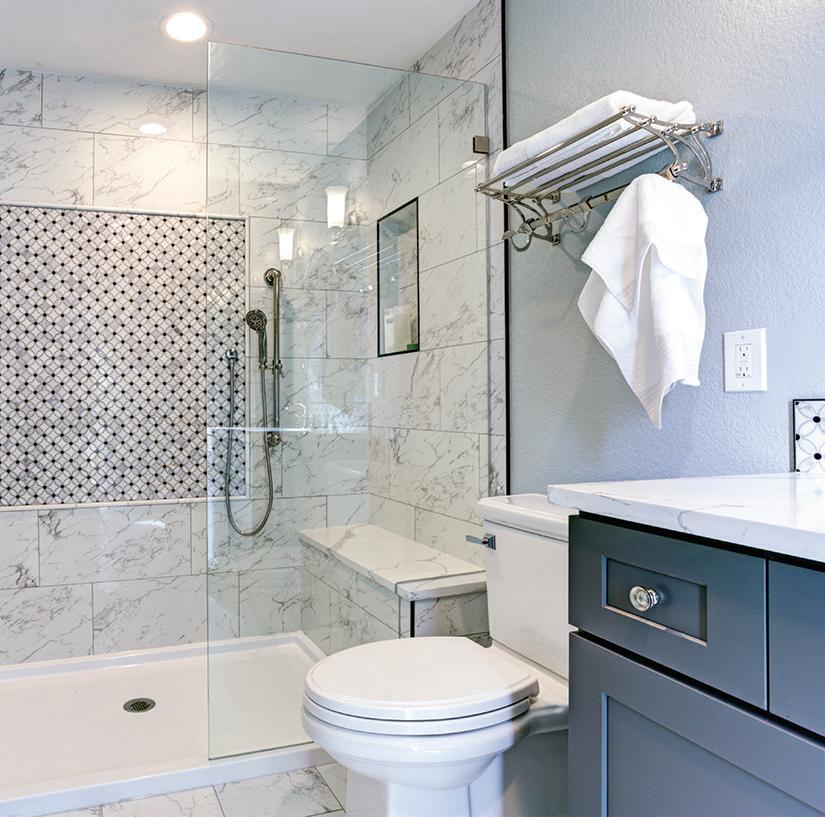
Seniors whose current bathrooms house a traditional shower setup that requires them to step over a tub can renovate the space and replace that feature with a walk-in shower. A walk-in shower does not require seniors step over a bathtub, greatly reducing the risk of falls while bathing. Some additional shower renovations include installing a bench so seniors can sit down while bathing, ideally while using a hand-held shower head.

• Purchase non-slip materials for the bathroom. Non-slip floor mats in a bathroom are essential for anyone, and especially beneficial for seniors. A nonslip vanity storage bin and toothbrush holder also can ensure daily accessories remain accessible.
• Elevate toilet heights. Elevating toilet heights in bathrooms throughout the home can make it easier for seniors to sit down and get up when going to the bathroom. Toilets compliant with the Americans with Disabilities Act (ADA) are roughly 18 inches taller than standard toilets, which can make a big difference for seniors.
These are just a handful of ways seniors can make their bathrooms safer as they aspire to stay in their homes longer.
How to spot a mold infestation in your home
Homeowners know the work related to their homes is never done. Tasks ranging from routine maintenance to minor tweaks to large projects are part of homeownership.
Some of the work related to a home focuses on functionality, while other tasks might be all about aesthetic appeal. Potential health concerns related to a home also merit homeowners’ attention. Mold is one such issue. Though it’s impossible to pinpoint how much mold poses a health problem to a home’s inhabitants, it’s fair to suggest homeowners feel that no mold is ideal. According to the New York State Department of Health, exposure to indoor mold can cause nasal and sinus congestion; eye irritation marked by itchy, red and watery eyes; wheezing and difficulty breathing; cough and other types of throat irritation; skin irritation, including rash; and headache.
The potentially harmful consequences of a mold infestation inside a home underscore how important
it can be for homeowners to learn to identify when they have a mold issue at home.
• Learn what mold looks like. Mold patches increase in size the longer an infestation goes unchecked, so it might be easier to stop an issue after it’s been around awhile. The NYSDOH notes that mold typically appears as fuzzy patches that may be discolored or even slimy.
• Recognize that mold also can be malodorous. Mold produces a distinct musty smell that is often the first symptom people recognize when they have n infestation at home. If a musty smell is present in a room, try to follow it to its source. That may involve some trial and error, as mold can grow behind and even underneath surfaces, including carpets, wallpaper and cabinets. Mold also can grow behind walls, a situation that may necessitate working with a remediation professional.
• Know where to look. Though mold can grow anywhere in a home, certain areas in a home are
more vulnerable to an infestation than others. Rooms affected by moisture are susceptible to mold growth. In bathrooms, mold may grow around sinks, shower stalls and curtains, and tiles. In kitchens, mold can grow on tiles and even on the seal around a refrigerator door. Mold also can grow on and around window air conditioner units.
The NYSDOH notes that certain people may be more vulnerable to mold-related health problems than others. Such individuals include people with existing respiratory conditions and those with compromised immune systems. Homeowners can prioritize safeguarding their homes from mold infestations and, when necessary, work with remediation professionals to eliminate existing issues and reduce infestation risks going forward.
Protecting a home against a mold infestation is a simple yet important task homeowners can look to in an effort to keep their homes safe and healthy.











Fall Home Improvement
Remedies for creaky floors
Hardwood floors are coveted features in many homes. The National Wood Flooring Association says wood floors are the most environmentally friendly flooring options available. In the United States, the hardwood forests that provide flooring products are growing twice as fast as they are being harvested. Furthermore, wood floors can last for many generations and require fewer raw materials to produce than other flooring options. That means less waste may end up in landfills.
Hardwood floors can endure for decades in a home, but over time those same floors may need some tender loving care to keep them looking good and working as they should. Squeaky floors are a common nuisance that homeowners may experience. Squeaking is often caused by movement and friction between floorboards. Treating the problem involves identifying the underlying issue.
Loose hardware
Squeaky floors may be due to the loosening of the hardware holding the floor in place, says The Home Depot. When nails or screws no longer are secured tightly, the boards can rub together. The noise heard is the sound produced by rubbing. Tightening or replacing the hardware can help reduce the squeaking.

Counter-snap kit method
This Old House says this kit method is a great way to fix squeaks without damaging the floor. Once the source of the squeak is located, drill a 3/32-inch pilot hole through the hardwood flooring. Then insert a screw through the kit’s depth-control fixture and into the pilot hole, and drive it until it automatically snaps off below the wood surface. Follow this up by filling the hole with wood putty that matches the floor color. Once the putty is dry, lightly sand the area to blend.
Use a shim or shims Sometimes the floor may squeak because of a gap between the joists and the subfloor. Filling the gap with a small piece of wood called a shim can help alleviate the gap or gaps.
Drive up screws
If a squeak is just in one spot, The Home Depot says that you may be able to drive short screws from below into the subfloor.
Small gaps
For small gaps between boards, sprinkle talcum powder or powdered graphite between squeaky boards to reduce friction. Wood filler applied with a putty knife also may work. For larger gaps, use a liquid filler designed for wood floors.
Homeowners also can visit their local home improvement center for other hardware solutions designed for underfloor repairs to remedy squeaks. Many work from underneath the floor and involve mounting plates or brackets to sure up the floor.
Squeaky floors can be problematic, but noises can be banished with some repair work.

Tips to maximize closet space
Who couldn’t use a little more closet space at home? As individuals accumulate more belongings, they need places to store all of these items. While modern homes may be built with extra storage in mind, older homes often place a premium on closet space. Homes built earlier than the 1980s may have small closets in bedrooms and only one or two additional closets around the home for linens and other items.
The most obvious solution to a lack of closet space is to build more closets. But too often home floor plans cannot accommodate new closets. Therefore, homeowners may have to get creative to maximize their space.
Sort and discard Individuals can take some time to empty closets and assess what is in them. Sometimes more space can come from simply thinning out belongings that are no longer used. Take off the plastic coverings on dry cleaning and discard bulky shoe
boxes.
Invest in thinner hangers
Clothes hangers come in all types, but the thinnest and most durable ones tend to be the no-slip velvet variety. Such hangers keep garments from slipping off and feature an ultra-thin design, says Real Simple magazine.
Use storage containers
Grouping items together and condensing them can free up space. Tuck belts, handbags and other items into storage bins that can be labeled and stacked. Loose items can look more cluttered and even take up more space when spread out.
Pair shelves with rods
For those with enough space, hanging a few shelves in unused areas in the closet can provide more storage space. If there is sufficient space above the rod, install a shelf and place seldom-used items
up high.
Get a closet system
A customized closet system will certainly provide the best chances to maximize closet space. These companies will measure the closet and assess the contents to draw up a design that will give homeowners what they need. Closet systems also can adjust and grow with lifestyle changes.
Choose other storage solutions
In addition to closets, people can identify other spaces to store items. This can include bins under beds, storage benches or ottomans, the back sides of doors, or in furniture with built-in drawers. Individuals also can purchase free-standing closets or armoires that can fill in when rooms do not have enough closet space or no closet at all. Maximizing closet space comes down to some creativity, de-cluttering and utilizing additional furniture to meet needs.
















